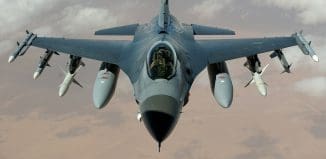Hunter Becomes Prey: USA Looking to Cope With UAV’s

This post is also available in:  עברית (Hebrew)
עברית (Hebrew)
U.S. military researchers are seeking help from drone experts in developing an agile and mobile drone-defense system that will be able to defeat a raid of self-guided, small unmanned aerial systems (UAS) that are attacking an important moving target like a high-value convoy. Officials of the U.S. Defense Advanced Research Projects Agency (DARPA) released an industry call for assistance recently for the Mobile Force Protection (MFP) program.
According to intelligent-aerospace.com, the potential $63 million project seeks ways to defend against not only today’s radio-controlled and GPS-guided weaponized UAS, but also against future UAS that navigate by visual means in large groups to gather intelligence and coordinate attacks against one or more high-value moving targets.
A particular interest is the ability to counter relatively small fixed-wing or helicopter UAS that weigh less than 200 pounds apiece, DARPA officials say. An MFP system should be able to integrate new approaches and technologies quickly, and work on all platforms – airborne, ground and maritime.
The program’s first phase will develop enabling technologies. Once that’s completed, the program will move to a second and third phase that will culminate in a prototype system demonstration. This solicitation is only for the program’s first phase, which should be worth $3 million for each of several contractors.
An MFP system could include distributed and elevated sensors and effectors networked to form a fused air surveillance picture, be controlled for fast decisive action, and provide several low-risk UAS-neutralization options.
A top-level system MFP architecture would boil down to three steps; sense, decide, and then act using a neutralization web that integrates existing and emerging sensors through a fusion engine.
To demonstrate the system, DARPA experts will use the U.S. Army Maneuver Aviation and Fires Integration Application (MAFIA) as the backbone operating system to enable a system plug-and-play environment, and DARPA will consider only system prototypes that incorporate a MAFIA architecture.




























